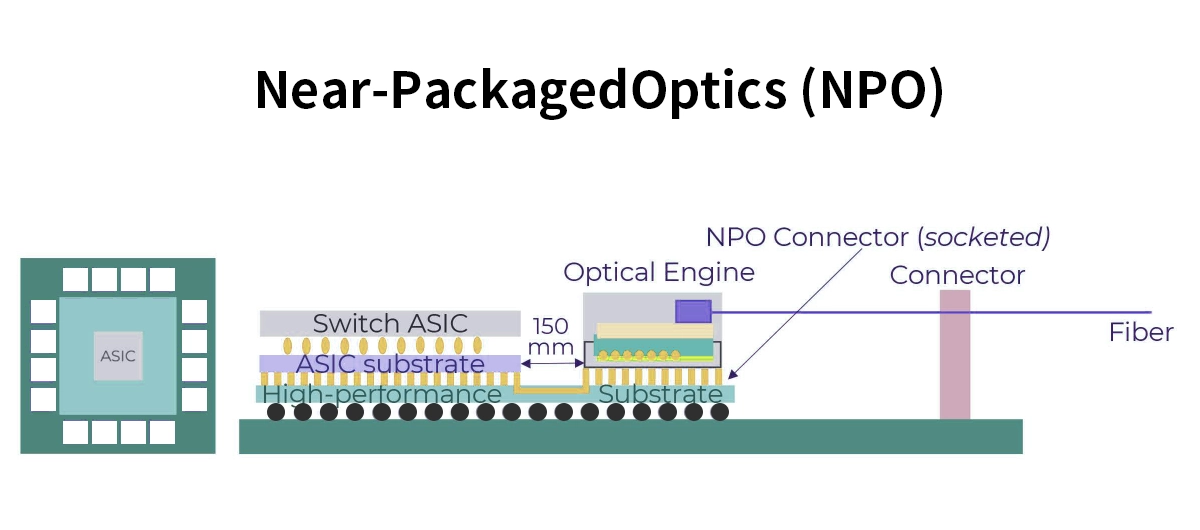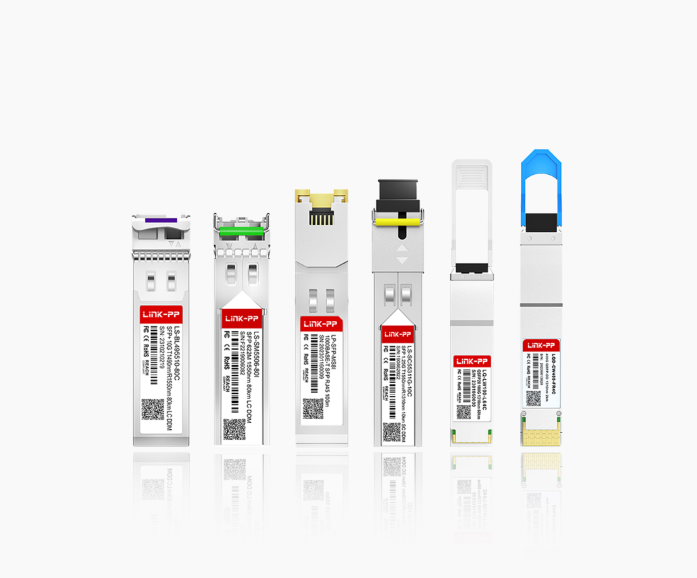
The insatiable global demand for data, driven by AI, machine learning, 5G, and hyperscale computing, is pushing traditional network architectures to their limits. At the heart of this challenge lies the humble yet critical optical transceiver—the component that converts electrical signals to light and back. For years, pluggable optics have been the industry standard, but they are becoming a bottleneck in terms of power, density, and speed.
Enter two revolutionary paradigms: NPO (Non-Powered Optics) and CPO (Co-Packaged Optics). These are not just new products but fundamental shifts in how we integrate optics into network systems. Understanding the key differences between NPO and CPO is crucial for anyone involved in planning the future of data centers and high-performance computing.
This article will serve as your definitive guide, exploring what NPO and CPO are, how they compare, and where they fit in the evolving landscape of modern networking.
⚔️ Key Takeaways
NPO puts optics near the processor. This helps performance and makes upgrades easier. You can change parts when needed.
CPO puts optics right on the processor package. This makes data move faster and uses less power.
Pick NPO if you want easy upgrades. It is good for data centers that change often.
Pick CPO if you need the fastest speed and best efficiency. It works well for big data centers with lots of data.
Think about what you need for performance, upgrades, power, space, and budget before you choose NPO or CPO.
⚔️ What is NPO (Non-Powered Optics)?
NPO, or Non-Powered Optics, represents an intermediate but significant step between traditional pluggables and full co-packaging. In an NPO architecture, the optical engine is removed from the pluggable transceiver and placed directly on the switch board—often on a separate, line card-like PCB near the switch ASIC. However, it remains "non-powered" because it is not integrated into the ASIC package itself.
The primary driver for NPO is power efficiency. By moving the optics closer to the switch and using a more direct electrical interface, signal integrity is improved, and the power-hungry DSP (Digital Signal Processor) can be simplified or even eliminated for very short-reach applications.
Key Characteristics of NPO:
Architecture: Optics on the host board, near the ASIC.
Power Consumption: Significantly lower than pluggables, but higher than CPO.
Thermal Management: Easier to manage than CPO as the optics and ASIC are separate.
Upgradability & Maintenance: Offers more flexibility than CPO, as the optical modules can be serviced or upgraded independently.
NPO is often seen as a pragmatic solution for next-generation 800G and 1.6T datacenter switches, providing a clear path to reduce power without the full complexity of co-packaging.

⚔️ What is CPO (Co-Packaged Optics)?
CPO, or Co-Packaged Optics, is the more radical and long-term evolution. In a CPO design, the optical engine is no longer just near the ASIC; it is co-packaged within the same module or substrate as the switch silicon (ASIC). This intimate integration turns the traditional model on its head.
The main advantage of CPO is an even more dramatic reduction in power consumption and latency. The electrical signals travel a minuscule distance between the ASIC and the optics, eliminating the need for powerful DSPs and reducing signal loss. This makes CPO a cornerstone technology for future AI/ML clusters and exascale computing where every watt and nanosecond counts.
Key Characteristics of CPO:
Architecture: Optics and ASIC in a single, integrated package.
Power Consumption: The lowest possible among optical solutions.
Thermal Management: Highly complex, requiring advanced cooling for both electronics and optics in one package.
Upgradability & Maintenance: The most challenging; a failure often requires replacing the entire switch unit.
⚔️ NPO vs CPO: A Head-to-Head Technical Comparison
To clearly illustrate the differences, let's break down the key parameters in a comparative table. This NPO and CPO comparison highlights why one might be chosen over the other for specific optical networking applications.
Feature | ||
|---|---|---|
Integration Level | Optics on board, near ASIC | Optics inside the ASIC package |
Power Efficiency | High (~30-50% reduction vs. pluggables) | Very High (~50%+ reduction vs. pluggables) |
Latency | Lower than pluggables | Lowest possible |
Thermal Management | Simplified; components can be cooled separately | Complex; requires unified cooling solution |
Upgradability & Repair | Good (modules can be replaced) | Poor (entire switch may need replacement) |
Technology Maturity | Emerging (deployments starting now) | Early R&D / Prototype Stage |
Best-Suited For | Next-gen 800G/1.6T data centers, HPC | Future AI/ML clusters, Exascale computing |
Cost Structure | Lower initial investment, familiar OpEx model | High initial R&D and CapEx |
This table shows that the choice isn't about which is "better," but which is more suitable for your specific network requirements and timeline. NPO offers a viable, lower-risk path for imminent deployments, while CPO represents the ultimate goal for power and performance.
⚔️ A Deep Dive into Optical Modules and the LINK-PP Advantage
To truly grasp NPO and CPO, one must understand the optical modules at their core. These are not the pluggable transceivers you slide into a switch front panel. In NPO and CPO architectures, the "module" refers to the optical engine—the complex assembly of lasers, modulators, photodetectors, and silicon photonics that does the actual conversion of signals.
The performance of this engine is paramount. It dictates the achievable data rate, power efficiency, and reach. This is where specialist manufacturers like LINK-PP are making a significant impact. LINK-PP focuses on developing high-performance, reliable optical engines tailored for these advanced architectures.
For network architects looking for a proven high-speed optical transceiver solution that bridges today's needs with tomorrow's demands, LINK-PP's products are engineered for seamless integration. A prime example is their work in the NPO space.
For instance, the LINK-PP 800G-FR4 NPO Optical Engine is specifically designed for board-mounted applications, offering a robust and power-efficient path to 800G connectivity. This module exemplifies how LINK-PP is addressing the critical need for lower power in high-density switches without waiting for full CPO maturity.
Integrating such a specific LINK-PP optical module into an NPO design ensures compatibility, optimizes signal integrity, and simplifies the overall system design for OEMs.
⚔️ The Future of Networking: A Co-Packaged World?
So, where is the industry headed? The consensus is that CPO is the endgame for the highest-performance computing environments. However, the transition will be gradual. NPO will act as a crucial stepping stone to full CPO adoption, allowing the industry to solve challenges related to yield, testing, and thermal management in a more incremental way.
The development of silicon photonics technology and advanced packaging techniques will be the key enablers for CPO's success. In the meantime, the benefits of NPO for data centers are tangible and available today, providing an immediate answer to the pressing issue of power consumption.
When planning your network's future, considering a partner like LINK-PP is a strategic move. Their expertise in both current and emerging optical technologies ensures that your infrastructure is not only state-of-the-art but also future-proof.
⚔️ Conclusion: Making the Strategic Choice
The debate between NPO and CPO for data centers is a classic example of evolution versus revolution.
Choose NPO if you are building or upgrading a high-performance data center in the near term and need a proven, power-efficient optical networking solution with manageable risk and good serviceability.
Look towards CPO for long-term roadmaps focused on extreme-scale AI and computing, where maximizing power savings and minimizing latency are the non-negotiable top priorities.
Both technologies are essential in the industry's quest to build faster, greener, and more efficient networks. By understanding their distinct roles, you can make an informed decision that aligns with your technical and business objectives, leveraging innovative solutions from leaders like LINK-PP to power your digital future.
⚔️ FAQ
What is the main difference between NPO and CPO?
You will find that NPO places optics near the processor, while CPO puts optics directly on the processor package. This change makes CPO faster and more efficient for moving data.
Which is better for upgrading my data center, NPO or CPO?
NPO gives you easier upgrades. You can swap optical modules without changing the whole system. CPO offers higher performance, but upgrades may need more planning and work.
Does CPO always use less power than NPO?
CPO usually uses less power because the signal path is shorter. You save energy and keep your data center cooler. NPO still offers good efficiency, but CPO leads in power savings.
When should I choose NPO over CPO?
Choose NPO if you want flexibility and simple upgrades. It works well for centers that change often or need easy maintenance. CPO fits best when you need top speed and the lowest power use.
Can I switch from NPO to CPO easily?
Switching from NPO to CPO may require new designs or hardware changes. You should plan for this shift if your data center needs more speed and efficiency in the future.




